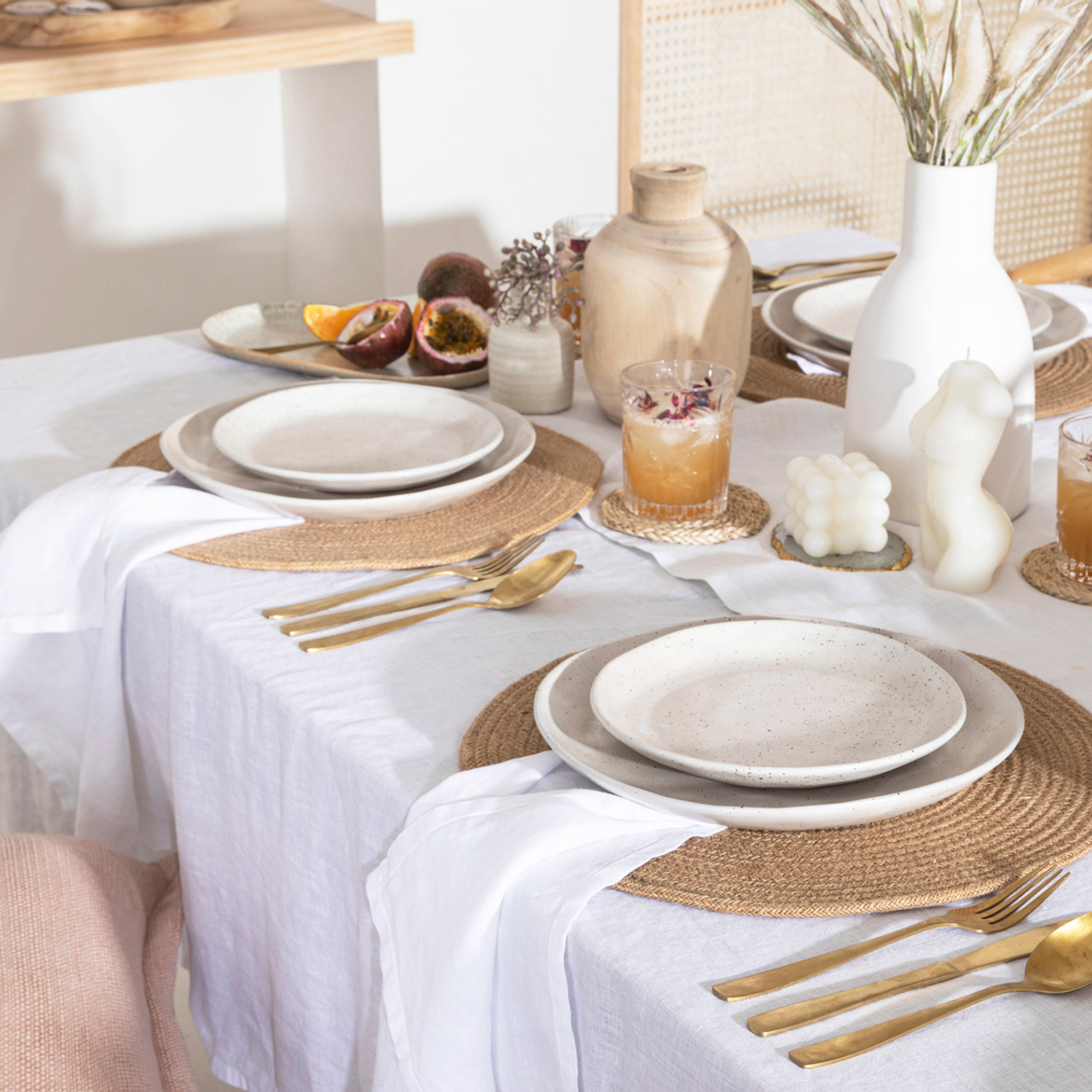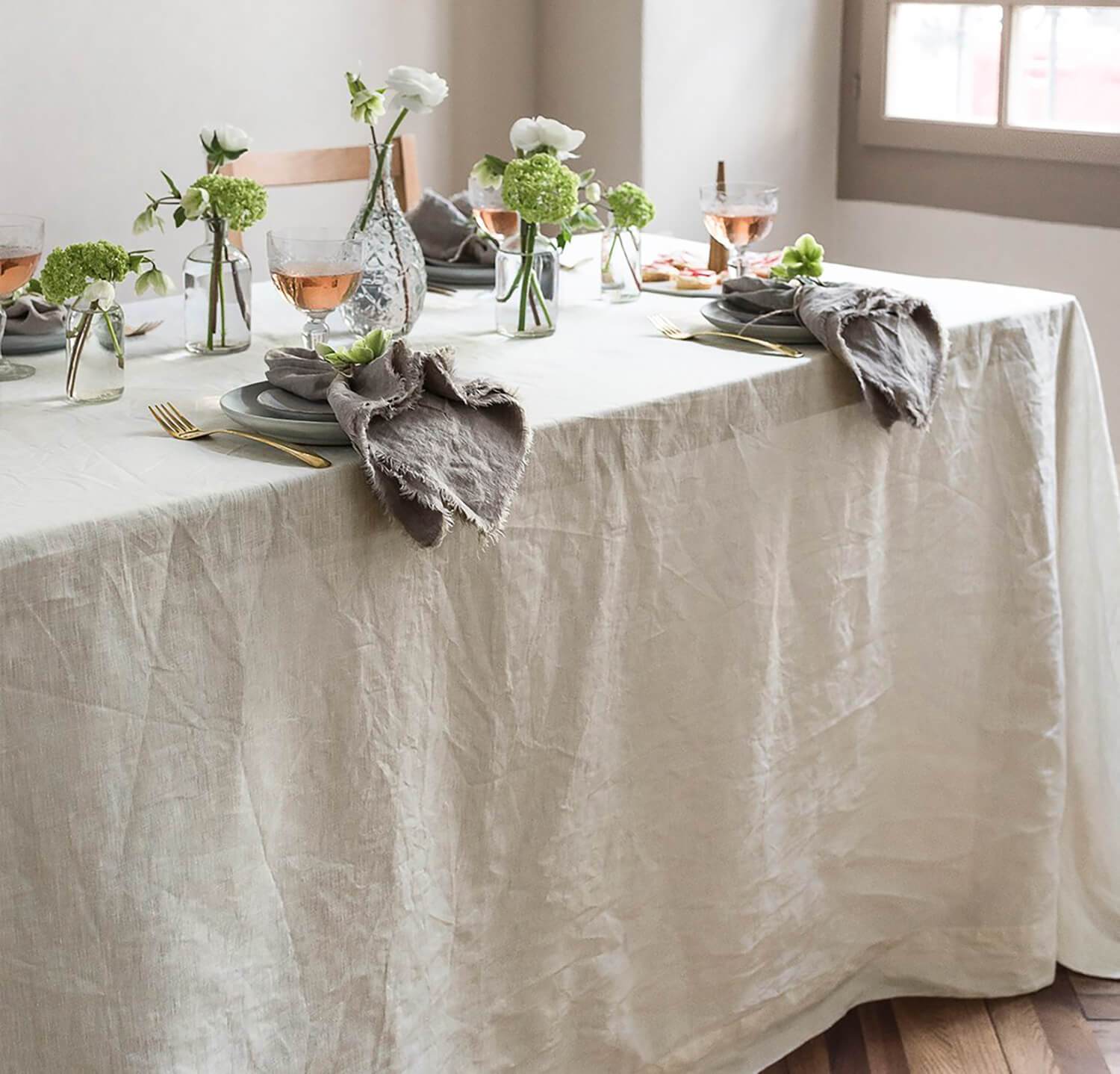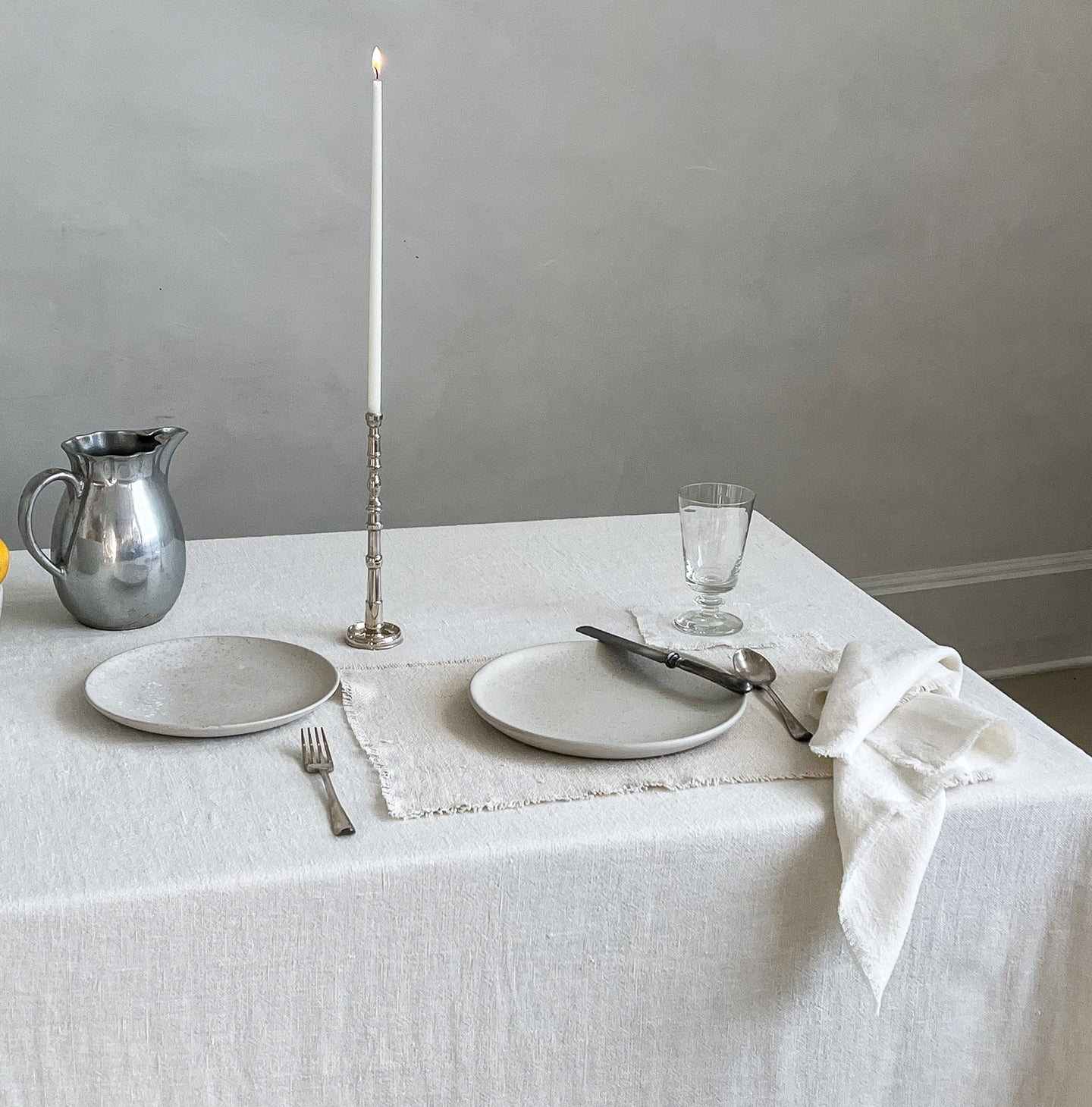Bed Linen Textile Developments: Checking Out Modern Trends and Creative Applications in Layout and Textile Sector
From sustainable manufacturing methods to sophisticated weaving technologies, the advancement of linen is improving the landscape of the textile industry. As we delve into the worlds of innovative layout applications and the development of linen blends and hybrid fabrics, a new chapter unfolds in which bed linen's duty in future fabric innovations takes center stage.
Sustainable Practices in Linen Production
Sustainable methods in linen production have actually come to be significantly critical in the fabric market's efforts to minimize ecological influence and advertise ethical sourcing methods. Linen, an all-natural fiber originated from the flax plant, offers a series of advantages such as durability, biodegradability, and breathability. Nevertheless, conventional techniques of bed linen production can involve significant water intake, chemical usage, and energy-intensive processes.
To resolve these difficulties, several textile suppliers are embracing lasting practices throughout the linen manufacturing process. This consists of sourcing flax from organic ranches that avoid unsafe pesticides and chemicals, carrying out water-efficient retting techniques to essence fibers from the flax stalks, and utilizing environmentally friendly dyes and coatings. Additionally, some firms are buying renewable resource sources to power their manufacturing facilities and reducing waste via recycling and upcycling campaigns.
Technological Advancements in Bed Linen Weaving
With the expanding focus on lasting methods in linen manufacturing, the textile sector is currently seeing a surge in technical innovations particularly aimed at revolutionizing the art of bed linen weaving. These advancements are reshaping the way linen textiles are created, offering raised efficiency, quality, and imagination in weaving strategies.
One of the vital technological innovations in linen weaving is the combination of electronic looms. These sophisticated looms are furnished with software program that enables detailed and intricate layouts to be woven with accuracy. By digitizing the weaving procedure, suppliers can attain greater uniformity and precision in their linen textiles.
In addition, improvements in thread spinning technology have allowed the production of finer and even more durable linen threads - table cloths. This causes softer and smoother linen materials that maintain their quality even after several usages and washes
Furthermore, the advancement of green dyeing processes and finishes for linen fabrics is acquiring traction. These sustainable methods not only reduce the environmental impact but also cater to the boosting consumer demand for ethically produced textiles.
Creative Layout Applications for Bed Linen
Cutting-edge artistic approaches are progressively shaping the innovative design applications for linen in the textile sector. Developers are pushing the limits of conventional linen use, discovering its adaptability in different applications. One famous pattern is the combination of bed linen in lasting fashion lines, where its environmentally friendly residential properties are highlighted. Linen's all-natural visual charm and ability to blend with various other fabrics make it a favored choice for producing distinct garments and devices that accommodate the ecologically conscious customer.
Furthermore, developers are try out bed linen in home design, using its durable and breathable nature to craft stylish furnishings such as drapes, bed linens, and furniture. The texture and drape of linen bring a sense of refinement and convenience to indoor rooms, including a touch of elegance to modern homes.

Bed Linen Blends and Crossbreed Fabrics

Hybrid fabrics, on the various other hand, take the principle of mixing a step further by incorporating additional elements such as metallic strings, recycled products, or conductive fibers. These cutting-edge textiles not just expand the design possibilities but likewise present practical facets like conductivity, antimicrobial residential or commercial properties, or boosted durability. Crossbreed textiles are progressively being utilized in numerous markets, consisting of style, interior style, and technological fabrics, where the need for multifunctional materials is on the rise.
Bed linen's Role in Future Textile Innovations

In the realm of future fabric developments, linen is expected to be a principal in the advancement of advanced useful materials. Designers and scientists are exploring means to improve linen's inherent high qualities via technological improvements, such as integrating wise fabrics, nanotechnology, and performance surfaces. These developments intend to raise linen's efficiency attributes, making it appropriate for a more comprehensive series of applications, from activewear to safety clothing.
Additionally, the mix of linen with other all-natural or synthetic fibers opens endless possibilities for producing novel textiles with unique homes and performances. By leveraging linen's characteristics and checking out ingenious blends, the textile industry is positioned to present amazing growths that satisfy advancing customer demands and sustainability demands.
Final Thought
In final thought, the exploration of sustainable methods, technical innovations, creative design applications, linen blends, and its duty in future fabric technologies highlight the continual advancement of linen material in the contemporary style and fabric sector. With an emphasis on innovation and creativity, the adaptability and eco-friendly nature of bed linen make it a valuable material for developers and producers alike, leading the means for further developments and developments in the field of fabrics.
As we dig into the realms of creative design applications and the Going Here appearance of bed linen blends and hybrid fabrics, a new chapter unfolds in which linen's role in future fabric innovations takes facility stage.
Exploring the combination of bed linen with various other materials has actually led to the emergence of innovative blends and hybrid textiles in the modern textile market. Linen blends offer a distinct combination of the attributes of bed linen with those of other fibers, resulting in fabrics that have improved properties such as increased sturdiness, enhanced draping, and minimized advice wrinkling.The development of bed linen blends and hybrid textiles has set the phase for Linen to play a critical role in driving future textile technologies.In the realm of future textile technologies, bed linen is expected to be a crucial player in the advancement of advanced practical fabrics.